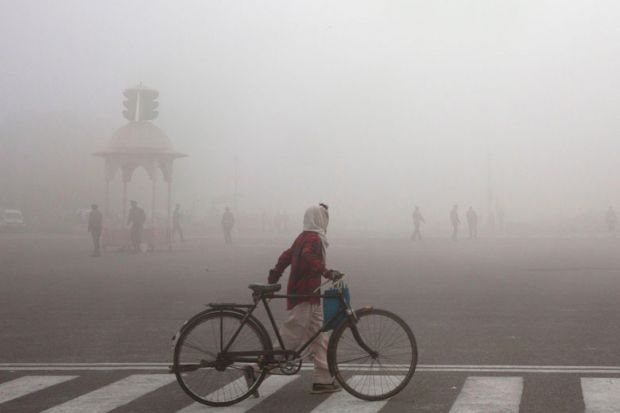Budget woes and internal divisions could prove fatal for a pan-Asian university backed by regional governments, scholars say.
Based in New Delhi, the South Asian University (SAU) is supported by an intergovernmental partnership, the South Asian Association for Regional Cooperation (SAARC), with its eight member nations – including India, Pakistan and Nepal – contributing funding.
SAU has become a staging ground for annual clashes in recent years. Last November, student protests over “significant” scholarship reductions escalated dramatically into hunger strikes, with a few students hospitalised and the police called to intervene. In July, hundreds of international faculty petitioned in support of SAU scholars who were suspended over accusations that they incited the protests.
Now the university – which has grown to more than 700 learners and seven departments after being established in 2010 – is facing “severely depleted” finances, lacking £9.5 million, according to media reports.
Geopolitical tensions haven’t helped. Pakistan reportedly hasn’t contributed money toward SAU’s operational costs since 2019. Other countries are said to be behind on their payments.
Shahid Jameel, a professor at the Oxford Centre for Islamic Studies and former chief executive of the Wellcome Trust DBT India Alliance, said that underlying issues had plagued the university for years.
“The student protests, faculty suspensions and so on are not the reason but the outcome of deeper malaise,” he said. “The situation is clearly not conducive to the initial lofty ideals of a world-class university supported by SAARC nations. There is a clear possibility of SAU closing down or reinventing itself.”
Professor Jameel said news of the institution’s financial woes did not come as a surprise, given that the institution’s multilateral funding model – “hard to implement even in the best of times”, with the university at the “mercy of sovereign nations” – had left SAU’s future looking “bleak”.
“There is no mechanism to enforce it and goodwill is out of fashion in the world, including south Asia,” he said.
“Look at the reality: two SAARC countries – Pakistan and Sri Lanka – which were supposed to contribute 20 per cent of the SAU budget, are practically bankrupt.”
Rafiq Dossani, director of the Center for Asia Pacific Policy and a senior economist at the US-based thinktank the Rand Corporation, agreed that the “biggest problem” currently facing SAU was its lack of finances.
“With the exception of India and Bangladesh, the other participating countries are in extremely poor financial shape, particularly Pakistan and Sri Lanka. This leaves India carrying the burden,” he said.
Given the country’s size and economic heft, it could afford to do so, he said, but he believed some “critical choices” would need to be made.
“If it is to be a South Asian University, the advantage in terms of soft power generation for India will be immense, but only if the university is designed to reflect south Asia in its diversity across the board,” said Dr Dossani.
Alternatively, SAU could continue as a “largely India-managed and India-staffed university”, he said, but one that was open to students from south Asia generally.
“This will still be valuable to enable the crucial people-to-people exchange, but primarily at the student level,” he said.
Register to continue
Why register?
- Registration is free and only takes a moment
- Once registered, you can read 3 articles a month
- Sign up for our newsletter
Subscribe
Or subscribe for unlimited access to:
- Unlimited access to news, views, insights & reviews
- Digital editions
- Digital access to THE’s university and college rankings analysis
Already registered or a current subscriber? Login








